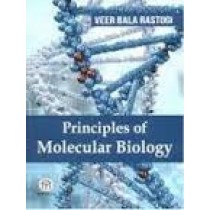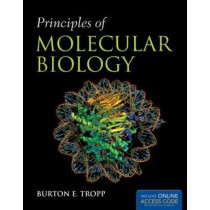Biology
-
 KWD3.30
KWD3.30 -
 KWD2.70
KWD2.70 -

بيولوجيا الإنسان
Specialty: Biology,
Publisher: مركز الكتب الأردني,
Publication Year: 2001هذا الكتاب مقدم للطلبة غير المتخصصين في العلوم الحياتية أو الطبية كمدخل لتعريفهم بجسم الإنسان بحيث يتعاملوا مع هذه النعمة الإلهية على أساس يؤهلهم للاعتناء بأجسادهم .. وأخذ القرارات السليمة المتعلقة بصحة الإنسان
زود الكتاب بأشكال غاية في الوضوح وعولجت المواضيع ببساطة مع التركيز على المفاهيم الأساسية يتألف الكتاب من عشرين فصل موزعة في ستة أجزاء
Weight: 1.8 KG
Learn MoreKWD6.90 -

Transactions on Computational Systems Biology v 2
Pages: 156,
Specialty: Biology,
Publisher: Springer,
Publication Year: 2005,
Cover: Paperback,
Dimensions: 154x234x8mm
It gives me great pleasure to present the Special Issue of LNCS Transactions on Computational Systems Biology devoted to considerably extended versions of selected papers presented at the International Workshop on Bioinformatics Research and Applications (IWBRA 2005). The IWBRA workshop was a part of the International Conference on Computational Science (ICCS 2005) which took place in Emory University, Atlanta, Georgia, USA, May 22-24, 2005. See http://www.cs.gsu.edu/pan/ iwbra.htm for more details. The 10 papers selected for the special issue cover a wide range of bioinformatics research. The first papers are devoted to problems in RNA structure prediction: Blin et al. contribute to the arc-preserving subsequence problem and Liu et al. develop an efficient search of pseudoknots. The coding schemes and structural alphabets for protein structure prediction are discussed in the contributions of Lei and Dai, and Zheng and Liu, respectively. Song et al. propose a novel technique for efficient extraction of biomedical information. Nakhleh and Wang discuss introducing hybrid speciation and horizontal gene transfer in phylogenetic networks. Practical algorithms minimizing recombinations in pedigree phasing are proposed by Zhang et al. Kolliet al. propose a new parallel implementation in OpenMP for finding the edit distance between two signed gene permutations. The issue is concluded with two papers devoted to bioinformatics problems that arise in DNA microarrays: improved tag set design for universal tag arrays is suggested by Mandoiu et al. and a new method of gene selection is discussed by Xu and Zhang.show more
Weight: 0.26 KG
Learn MoreKWD9.00 -

The Cell: A Molecular Approach, 7E
Pages: 864,
Specialty: Biology,
Publisher: Oxford UP,
Publication Year: 2018,
Cover: Paperback,
Dimensions: 211x274x33mm
Published by Sinauer Associates, an imprint of Oxford University Press. Teaching cell biology can be a daunting task because the field is so vast and rapidly moving, characterized by a continual explosion of new information. The challenge is how to teach students the fundamental concepts without becoming bogged down in details. Students need to understand the principles of cell biology and be able to appreciate new advances, rather than just memorizing "the facts" as we see them today. At the same time, the material must be presented in sufficient depth to thoughtfully engage students and provide a sound basis for further studies. The Cell, Seventh Edition, provides a balance of concepts and details that meets the needs of today's students and their teachers. Written by an active scientist and experienced educator, this textbook combines readability and cohesiveness with comprehensive and up-to-date science. show more
Weight: 1.88 KG
Learn MoreKWD24.89 -

Schaum's Outline of Biology, 5th Edition
Pages: 528,
Specialty: Biology,
Publisher: McGraw-Hill,
Publication Year: 2018,
Cover: Paperback,
Dimensions: 205.74x274.32x22.86mm
Tough Test Questions? Missed Lectures? Not Enough Time? Fortunately, there's Schaum's. More than 40 million students have trusted Schaum's to help them succeed in the classroom and on exams. Schaum's is the key to faster learning and higher grades in every subject. Each Outline presents all the essential course information in an easy-to-follow, topic-by-topic format. You also get hundreds of examples, sovled problems, and practice exercises to test your skills. This Schaum's Outline gives you: * 800 supplementary problems to reinforce knowledge* Concise explanations of all biology concepts* Coverage of both biochemical and molecular approaches to biology and an understanding of life in terms of the characteristics of DNA, RNA, and protein macromolecules* New end of chapter quiz* New end of unit test* Support for all major textbooks for courses in Biology PLUS: Access to revised Schaums.com website with access to 25 problem-solving videos, and more. Schaum's reinforces the main concepts required in your course and offers hundreds of practice questions to help you suceed. Use Schaum's to shorten your study time-and get your best test scores! Schaum's Outlines - Problem solved. show more
Weight: 0.79 KG
Learn More -

Schaum's Easy Outline Molecular and Cell Biology, Revised Edition
Pages: 128,
Specialty: Biology,
Publisher: McGraw-Hill,
Publication Year: 2012,
Cover: Paperback,
Dimensions: 140x216x7mm
If you are looking for a quick nuts-and-bolts overview, turn to Schaum's Easy Outlines! Schaum's Easy Outline Molecular and Cell Biology is a pared-down, simplified, and tightly focused review of the topic. With an emphasis on clarity and brevity, it features a streamlined and updated format and the absolute essence of the subject, presented in a concise and readily understandable form. Graphic elements such as sidebars, reader-alert icons, and boxed highlights stress selected points from the text, illuminate keys to learning, and give you quick pointers to the essentials. Expert tips for mastering molecular and cell biology Last-minute essentials to pass the courseSupports the major textbooks for molecular and cell biology coursesAppropriate for the following courses: Molecular and Cell Biology, Cell Biology, Cytology, Molecular Biology, Molecular Genetics, Genetics, Microbial Genetics, Biotechnology, Molecular Evolution, EvolutionEasy-to-follow review of molecular and cell biologySupports all the major textbooks for molecular and cell biology courses show more
Weight: 0.16 KG
Learn More -

Principles of Neurobiology
Pages: 645,
Specialty: Biology,
Publisher: Taylor & Francis,
Publication Year: 2015,
Cover: Loose-leaf,
Dimensions: 208.28x274.32x22.86mm
Principles of Neurobiology presents the major concepts of neuroscience with an emphasis on how we know what we know. The text is organized around a series of key experiments to illustrate how scientific progress is made and helps upper-level undergraduate and graduate students discover the relevant primary literature. Written by a single author in a clear and consistent writing style, each topic builds in complexity from electrophysiology to molecular genetics to systems level in a highly integrative approach. Students can fully engage with the content via thematically linked chapters and will be able to read the book in its entirety in a semester-long course. Principles of Neurobiology is accompanied by a rich package of online student and instructor resources including animations, journal club suggestions, figures in PowerPoint, and a Question Bank for adopting instructors. Principles of Neurobiology is additionally supported by the Garland Science Learning System. This homework platform is designed to evaluate and improve student performance and allows instructors to select assignments on specific topics and review the performance of the entire class, as well as individual students, via the instructor dashboard. Students receive immediate feedback on their mastery of the topics, and will be better prepared for lectures and classroom discussions. The user-friendly system provides a convenient way to engage students while assessing progress. Performance data can be used to tailor classroom discussion, activities, and lectures to address students' needs precisely and efficiently. For more information and sample material, visit http://garlandscience.rocketmix.com/.
Weight: 1.16 KG
Learn MoreKWD23.09 -

-

Principles of Molecular Biology
Pages: 752,
Specialty: Biology,
Publisher: Jones & Bartlett,
Publication Year: 2014,
Cover: Paperback,
Dimensions: 213.36x271.78x27.94mm
Includes access to the Student Companion Website with every print copy of the text. Written for the more concise course, Principles of Molecular Biology is modeled after Burton Tropp's successful Molecular Biology: Genes to Proteins and is appropriate for the sophomore level course. The author begins with an introduction to molecular biology, discussing what it is and how it relates to applications in "real life" with examples pulled from medicine and industry. An overview of protein structure and function follows, and from there the text covers the various roles of technology in elucidating the central concepts of molecular biology, from both a historical and contemporary perspective. Tropp then delves into the heart of the book with chapters focused on chromosomes, genetics, replication, DNA damage and repair, recombination, transposition, transcription, and wraps up with translation. Key Features: - Presents molecular biology from a biochemical perspective, utilizing model systems, as they best describe the processes being discussed -Special Topic boxes throughout focus on applications in medicine and technology -Presents "real world" applications of molecular biology that are necessary for students continuing on to medical school or the biotech industry -An end-of-chapter study guide includes questions for review and discussion -Difficult or complicated concepts are called-out in boxes to further explain and simplify
Weight: 1.47 KG
Learn More



